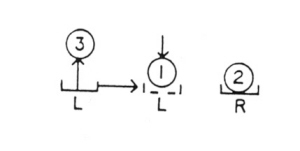
12 |
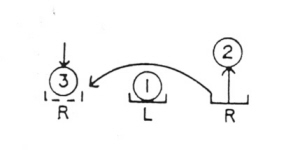
13 |
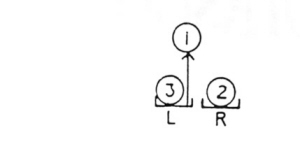
14 |

15 |
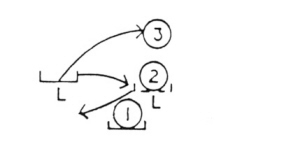
16 |
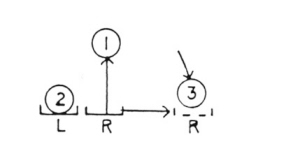
17 |

18 |
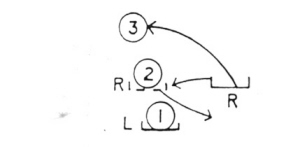
19 |

20 |

21 |
Page 32 Fall 1991
|
You
might also want to reverse the throwing sequence, from left,
middle, right to right, middle, left. To do this, notice
that at Step 1 the left hand throws a ball up at the midpoint of the
juggle. This makes a symmetrical pattern, with a ball in each hand
on either side and one ball high in the middle. This allows you to
choose which ball to throw next - left or right. In the pattern
outlined above, the right hand throws at Step 2. But if
instead the left hand throws (that would be two left-hand
throws in a row), a reversed sequence-right, middle, left-will
result.
Here
are "reversing" Steps 2 and 3:
(Figure
12) Rev. 2. LH (tossing again) tosses 3 up at the left and catches
1.
(Figure
13) Rev.
3. RH tosses 2 up at the right, reaches over
(or under) the left arm and catches 3. Once
begun, the remainder of the reversed sequence moves are so
inevitable there's no need to describe them - your hands will know. Inverted
Mess This
variation of Mills' Mess begins with the same Mills' Mess move in
Step 1 but, at Step 2 the ball is carried down and under, not
over, the opposite arm. Hence the term "inverted,"
though it's used loosely here. The result, of course, is not Mills'
Mess turned upside downgravity won't allow that. But the pattern
is clearly related to Mills' Mess (the toss-catchcarry at Steps 2
and 5, for instance) and exhibits a lot of the same intriguing
complexity.
As
with Mills' Mess, the count in this trick is 1-2-3, 1-2-3. Start
with two balls in the left hand, one in the
right, with the left hand at the right middle of the juggle
space...
(Figure
14) LH tosses 1 straight
up about 7-8 inches. (Figure
15) RH tosses 2 in a reverse cascade throw aiming for the
middle of the juggle space; then immediately catches 1 at its peak
and carries it down and to the left. (Figure
16). LH reverse cascades 3 in a short lob to the right,
catches 2 and swings back out to the left. (As with the
unadulterated Mills' Mess, Steps 4,5, and 6 are simply the reverse
of Steps 1,2, and 3.) (Figure17).
RH tosses 1 in a short lob straight up about 7-8 inches and goes
right to catch 3. (Figure
18). LH reverse cascades 2 aiming for the middle of the
juggle space; then immediately catches 1 at its peak and carries it
down and to the right. (FIgure 19). RH reverse cascades 3 in a short lob to the left, catches 2 and swings back out to the right. .. .and so on.
|

12 |

13 |

14 |

15 |

16 |

17 |

18 |

19 |

20 |

21 |
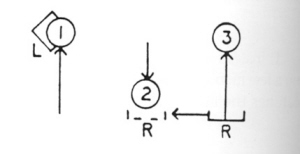
22 |